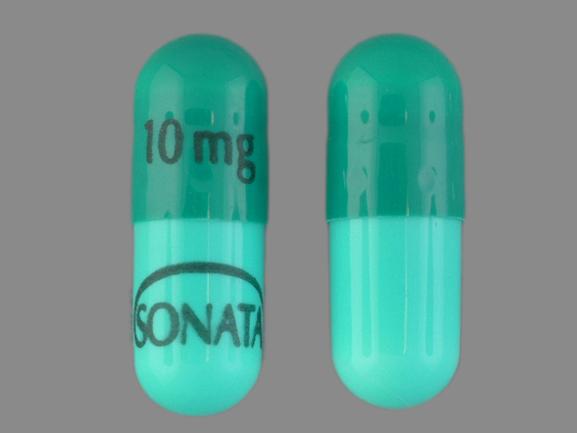Sonata and Alcohol/Food Interactions
There is 1 alcohol/food/lifestyle interaction with Sonata (zaleplon).
Zaleplon Food/Lifestyle
Moderate Food Interaction
GENERALLY AVOID: Alcohol may potentiate some of the pharmacologic effects of zaleplon. Use in combination may result in additive central nervous system depression and/or impairment of judgment, thinking, and psychomotor skills.
ADJUST DOSING INTERVAL: Administration of zaleplon with a high-fat or heavy meal may delay the onset of hypnotic effects. In healthy adult subjects, administration of zaleplon with a high-fat meal resulted in a 2-hour delay in the time to reach peak plasma drug concentration (Tmax) and a 35% reduction in the peak plasma drug concentration (Cmax) compared to fasting. Zaleplon systemic exposure (AUC) and elimination half-life were not significantly affected.
MANAGEMENT: Patients receiving zaleplon should be advised to avoid the consumption of alcohol. For faster sleep onset, zaleplon should not be administered with or immediately after a high-fat or heavy meal.
References (1)
- (2001) "Product Information. Sonata (zaleplon)." Wyeth-Ayerst Laboratories
Switch to consumer interaction data
Sonata drug interactions
There are 422 drug interactions with Sonata (zaleplon).
Sonata disease interactions
There are 8 disease interactions with Sonata (zaleplon) which include:
- alcohol intox
- depression
- drug dependence
- liver disease
- glaucoma
- liver disease
- resp depression
- renal dysfunction
More about Sonata (zaleplon)
- Sonata consumer information
- Check interactions
- Compare alternatives
- Reviews (71)
- Drug images
- Side effects
- Dosage information
- During pregnancy
- Generic availability
- Drug class: miscellaneous anxiolytics, sedatives and hypnotics
- Breastfeeding
Related treatment guides
Drug Interaction Classification
| Highly clinically significant. Avoid combinations; the risk of the interaction outweighs the benefit. | |
| Moderately clinically significant. Usually avoid combinations; use it only under special circumstances. | |
| Minimally clinically significant. Minimize risk; assess risk and consider an alternative drug, take steps to circumvent the interaction risk and/or institute a monitoring plan. | |
| No interaction information available. |
See also:
Further information
Always consult your healthcare provider to ensure the information displayed on this page applies to your personal circumstances.


